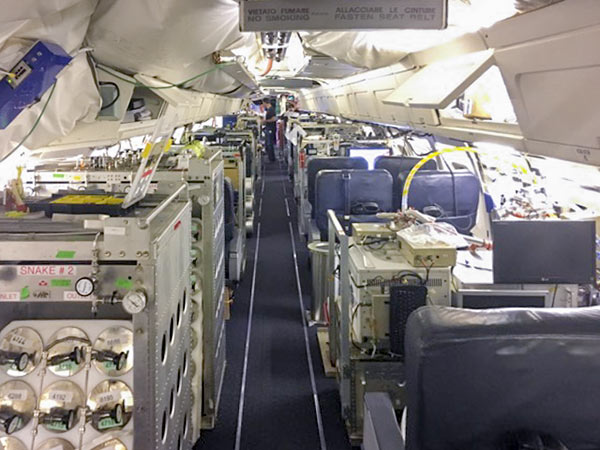THE GIFT OF BENZENE What’s that faint, slightly sweet smell in the air? More from Chris Vogel’s report on Houston’s industrial emissions: “According to the City of Houston, a six-month survey in 2008 showed that six out of seven air monitors near the ship channel detected benzene levels above what the EPA says can cause cancer in ten out of every million people. That’s ten times higher than what is considered an acceptable risk. ‘Until recently I didn’t even know they were releasing any benzene into the atmosphere,’ says Dr. Charles Koller, a leukemia specialist at MD Anderson. ‘It’s shocking to me. It seems, frankly, criminal.’ It can take more than ten years for anemia to develop in someone who has been exposed to benzene, says Koller, and even longer for leukemia. A person also needs to be genetically susceptible. ‘We don’t know how susceptibility works,’ he says, ‘we just know that it works.’ . . . ‘Once benzene gets in the air,’ [Koller] says, ‘it’s everywhere. So even in Katy, there’s someone who, if they’re susceptible, will get [sick] from what’s going on in the Houston Ship Channel.’” [Houston Press]




For someone who knows so little about pollution, Koller sure does spout a lot of nonsense. Toxicity is all about dose. Even arsenic is healthy (that’s right, I didn’t even say innocuous) in trace amounts.
.
Very few people live where the Ship Channel sensors are, so the sensors may be doing a good job at measuring emissions but the quantity of emissions are a horrible predictor of toxic exposure. And of those people who are exposed, the vast majority of them are adults (the people that work there for only a relatively small portion of their lives for only one shift per day) whose systems are matured and less susceptible to carcinogens than are children.
.
The fact is that once subjected to atmospheric turbulence, emissions dissipate at a geometric rate according to the distance from the source point. If you live in Katy, your air is clean.
.
A study was commissioned by the City of Houston several years ago that attempted to correlate ship channel pollution with benzene and butadiene. The executive summary was very alarmist and press-friendly, garnering a week-long special in the Chronicle. The study was posted on the City’s website until people started poking around in the body of the report and reading through all the limitations admitted to by researchers…and line after line of findings broken down by study population that determined “no significant effect”. There was actually only one population for which there was a significant correlation, and even then just by a hair’s breadth. The study got yanked from the website, and we never heard about it again.
Many years ago I worked in a refinery in Port Arthur. We used to wash our tools and hands in benzene all the time.
I often wonder if it will take a Love Canal type event to really get people in this region to re-think the environmental policies in and around Houston.
I guess sometimes people need to be kicked in the proverbial family jewels to finally wake up.
I’m sure those that lived in Cancer Alley, Louisiana thought they were far enough away from the airborne petrochemicals. That is, until they started to die. While dissipation of said chemicals may occur at the 1/r2 ratio in theory, this is not true in reality. The fact is, you can see Houston’s pollution long before you see the city of Houston, so why is it acceptable to believe these chemicals can not exist in large quantities beyond the city limits? The air in Katy, TX smells a hell of a lot different than the air in the Canadian Rockies that’s for sure.
@ Appetitus: Love Canal had nothing to do with air pollution. We’ve already had our equivalent, the Brio superfund site off of Beamer Road.
@ tanith: Katy, TX has its own unique pollution problems, mostly course particulate matter generated from land development, seasonal dust blowing off of agricultural fields, and localized emissions from I-10 truck traffic. The impacts from industry 30 miles to the east with prevailing winds from the south/southeast are negligible. The biggest part of what you’re smelling, though, is just the difference in vegetation and soil. Deep East Texas and the Hill Country smell different from the Canadian Rockies, too. That doesn’t mean that those areas have high concentrations of pollution.
aw shucks, can’t you just feeel the love?
hmmm.
Yea, right, no polluted air around here.
And what’s that smell?
And that layer of brown haze?
World Class!
TheNiche must be a Republican.
Sorry Niche, you and I agree on many things but not this one. People get sick from pollen brought thousands of miles away via air masses, so I have a hard time believing that we’re ‘safe’ from chemical wind just because we’re 30 miles away from its source.
@ markd: If you PAY ATTENTION, you’ll notice that I pointed out that air pollution is a multifaceted problem, comprised of numerous sources. There are legitimate concerns, and the type of pollution and the corresponding sources differ depending on where you happen to live or work in the Houston region.
.
To answer your questions in order: 1) The smell varies by location and can be attributable to industrial activity, auto emissions, vegetation, dust, and other sources. If you want a good idea of the geographic range of an odor, walk around Eastwood, EaDo, and 2nd Ward in the vicinity of the coffee roasting facility on Harrisburg Road. The odor is pungent and easily identifiable when they’re roasting, but it doesn’t travel further than a mile in any direction regardless of wind or the lack thereof. The same applies to the refineries out on SH 225, and you can test that assertion by merely driving the freeway with your windows open. 2) Brown haze is mostly particulate matter that accumulates low to the ground on calm days. It happens in rural areas too, but the effect is obviously going to be amplified over urban areas. Studies have indicated that cities including Atlanta and Chicago have far more severe problems with such pollutants, mostly because of prevailing wind patterns. There are a fair number of days when it may not seem like it, but we got the long end of the stick where winds are concerned.
.
@ Matt Mystery: If Republicans are a political party that avoids superficial, myopic, and intellectually dishonest approaches to public policy by reviewing scientific studies and attempting to account for and address all the component parts that comprise a given issue, then I guess that would make me a Republican. Obviously I’m not a Republican—just someone who hates on dumb****s, regardless of their position in society.
@ tanith: You’re probably referring to such issues as Saharan dust that makes it to North America from time to time. And YES, that’s a health concern. But that’s a non-point source on a continental scale, whereas benzene is point source emission from openings that are only a few feet in diameter. These are not comparable forms of pollution.